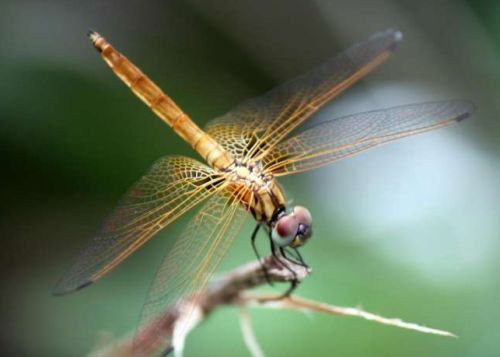100-million-year-old damselfly named after Sir David Attenborough
August 16, 2017 13:54

A new species of a 100-million- year-old damselfly discovered in Myanmar has been named in honour of famed British broadcaster and naturalist Sir David Attenborough, scientists said today.
The species, belonging to a group more commonly known as shadowdamsels, has been named Mesosticta davidattenboroughi.
Researchers decided to name the new species after David Attenborough because of his long-standing appreciation of dragonflies, and to celebrate his 90th birthday.
Mesosticta davidattenboroughi joins a long list of animals which have been named after Sir David Attenborough, including a weevil and fossil species of a plesiosaur and a fish.
The finding, described in the Journal of Systematic Palaeontology, was made in the Hukawng Valley of Kachin Province in Myanmar.
The fossil was found in a piece of mid- Cretaceous Burmese amber. "Dragonflies in amber are extremely rare and the recent discoveries by my Chinese colleagues are a new window on the past.
It is tradition in taxonomy (the naming of a new species) to contact the person concerned," said Edmund A Jarzembowski, professor at Nanjing Institute of Geology and Palaeontology in China. "Sir David was delighted because he is not only interested in the story of amber, but also a president of the British Dragonfly Society," he added.
Representational image of a damselfly.
The species, belonging to a group more commonly known as shadowdamsels, has been named Mesosticta davidattenboroughi.
Researchers decided to name the new species after David Attenborough because of his long-standing appreciation of dragonflies, and to celebrate his 90th birthday.
Mesosticta davidattenboroughi joins a long list of animals which have been named after Sir David Attenborough, including a weevil and fossil species of a plesiosaur and a fish.
The finding, described in the Journal of Systematic Palaeontology, was made in the Hukawng Valley of Kachin Province in Myanmar.
The fossil was found in a piece of mid- Cretaceous Burmese amber. "Dragonflies in amber are extremely rare and the recent discoveries by my Chinese colleagues are a new window on the past.
It is tradition in taxonomy (the naming of a new species) to contact the person concerned," said Edmund A Jarzembowski, professor at Nanjing Institute of Geology and Palaeontology in China. "Sir David was delighted because he is not only interested in the story of amber, but also a president of the British Dragonfly Society," he added.
Representational image of a damselfly.





 © 2024 Rediff.com -
© 2024 Rediff.com -